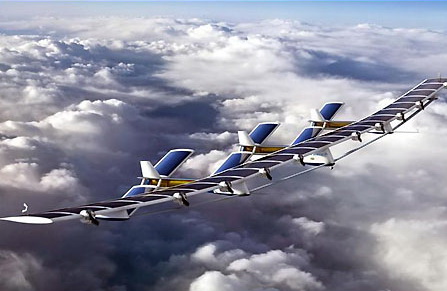
Objective
To construct a small autonomous and unmanned aircraft that can reach an altitude of 30km and carry a payload of under 10kg which can be launched into orbit from the aircraft.
Status
Mark II successful. Data, transmission and tracking systems have been tested and ready for Mark III deployment.
MARK II
We used a much stronger grain of balsa wood with cross beams and some strong super glue. We also purchased a new motor and propeller. The new battery is 1350 mAh. Sam built a battery tester to make sure the the battery doesn’t drop below a certain charge again.
The electronics we put into it are the Arduino board, XBEE wireless transmitter/receiver, which can send data at 128kbps from over 1.6km line of sight, GPS, Camera and Temperature Sensor. The XBEEs have been successfully set up after much difficulty in programming them. Now we simply interface with them through PUTTY and they establish their network automatically when powered on. We are now able to send the GPS and temperature data at over 1km line of sight.
The test flight of the Mark II was successful with the extra weight and new nose cone. However the ESC module burnt out after ten minutes. The same thing happened to the Mark I after a few test flights and mistakenly we put it down to the battery. The current draw from the battery to the motor is to much for the ESC to handle so we are investing in an 80A module for the next test flight. Stay tuned for updates.
MARK II – Test Flight 1
UPDATE (January 7th 2010): Below is our latest successful test flight with the GPS, temperature and voltage data being sent to the ground station. We found that the wheels are not suitable for taking off and landing on the grass field so we had to resort to hand launches and catches.
MARK II – Test Flight 2
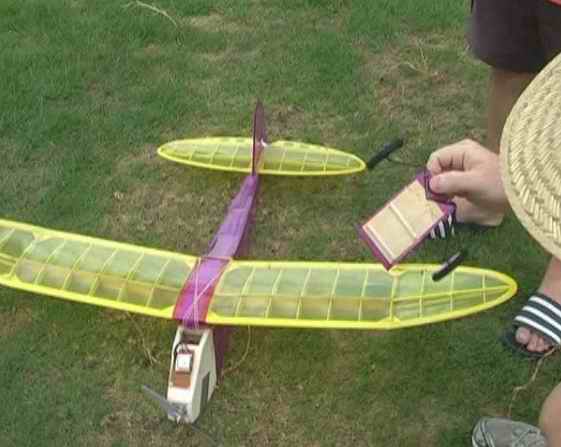
Next test flight is the 13th of January 2010. This will test the new ground station software plotting the GPS position in a map in real time as well as graphs of temperature and battery voltage.
—————————————
On our forth and fifth test flights of the Mark II plane we used the ground station interface from Project EMMA to produce real time GPS coordinates on Google Maps and graphs of voltage, temperature and speed. The data was recorded for over 30 minutes of flying on a particularly windy day which tested Sam’s flying skills.
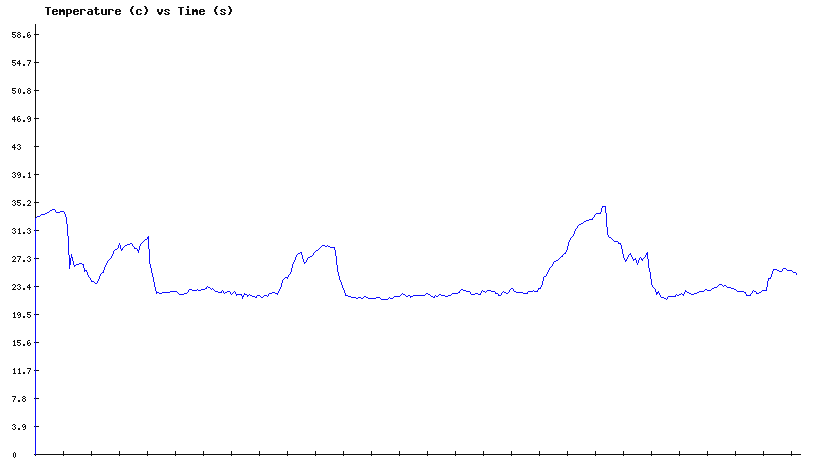
We were able to get a good idea of the battery life. The Voltage dropped from 12.5V to 9.8V over 35 minutes (the minimum voltage is 9.1V). The plane reached a maximum speed of 82 km/h travelling downwind, and we recorded an interesting temperature profile. A constant temperature of around 22 degrees while flying at an altitude between 20m and 50m is seen, while on the ground we measure about 31 degrees. Check out the graphs to the left.
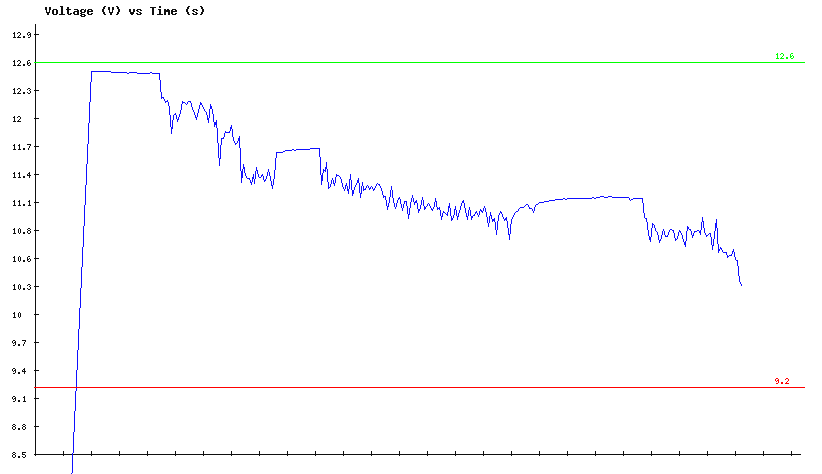
We attained minor damage to the hull due to the plane being hand launched but this is easily fixed. A problem also occurred with the EMMA web interface crashing at the 20min mark, meaning we could no longer see the map and graphs. Thankfully the data was still being logged. We suspect this problem was caused by the page displaying and processing too much information from the database or possibly a caching problem with Google Chrome. Regardless, we still gained a lot of useful data and the next flight is sure to be much more streamed-lined.
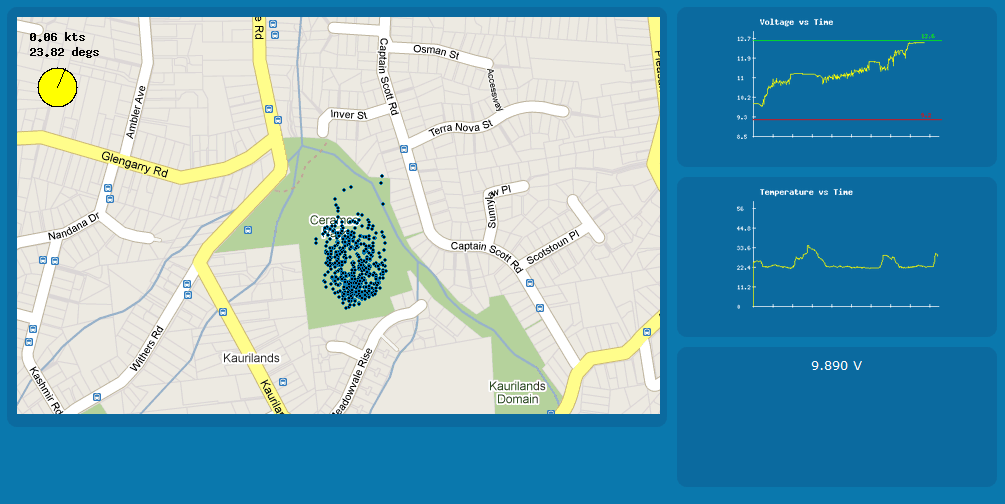
We now aim to start programming the auto pilot system. Check the forum pages for information on the specific hardware and software we plan to use.
MARK III Update: Construction of the next prototype plane is still being planned with specific building materials being the main focus of discussion. Every test flight of the Mark II and tests of the electronic systems brings us closer. The Mark III will be much larger, controlled by autopilot and reach an altitude of 10km with a 5kg payload.
UPDATE: The Mark II has not been retired. We have tested all the basic data and transmission systems and now have the electronic groundwork to proceed to the Mark III prototype design. The Mark II will be disassembled but parts could be modified for future use.

